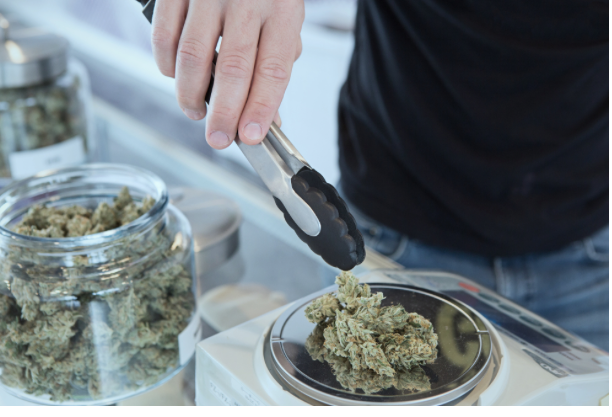Comments420 FILE - Rarely a week goes by without police or other public officials warning about so-called “fentanyl-laced” weed. Upon closer inspection, there’s little if any truth behind these sensational claims.
A case in point: Police in Brattleboro, Vermont recently generated headlines when they, along with agents from the federal Drug Enforcement Administration and Department of Homeland Security, arrested multiple people on charges of distributing fentanyl-tainted cannabis.
Days later, however, lab tests confirmed that no fentanyl was present in any of the marijuana samples that had been seized in the raid.
A similar scenario recently unfolded in Connecticut, where officials alleged that marijuana laced with fentanyl was responsible for over three dozen overdose incidents. Forensic analyses later determined that only one of these cases actually involved the ingestion of fentanyl. That case, health officials said, was probably the result of accidental contamination.
Such sensational pronouncements, followed by far less publicized refutations, are nothing new.
In 2019, Kellyanne Conway, the Trump administration’s opioid crisis czar, publicly alleged that cannabis consumers were routinely purchasing fentanyl-laced products on the illicit market. That claim was later walked back by a senior DEA chemist, who acknowledged that the agency had no record of ever having seized any marijuana that tested positive for fentanyl.
Recent exposes by Vice.com, Mic.com, and others provide numerous additional examples of police and other prominent officials making similarly unfounded claims. Nonetheless, many public officials continue to push this narrative unabated.
In Florida, local media recently amplified claims that Jacksonville police officers “find marijuana laced with fentanyl all the time.” More recently, Rep. Kevin Brady (R-TX), in a speech before Congress, opined that a growing percentage of cannabis coming from outside the United States is tainted with fentanyl.
To be clear, marijuana sold on the unregulated market can be of variable quality and purity. In some instances, unscrupulous sellers may even taint cannabis with other controlled substances (though rarely, if ever, is fentanyl among them). In other instances, they may sell samples that inadvertently contain molds or other components that can pose serious dangers to health.
The solution to this challenge isn’t to peddle sensational claims. It’s to legalize and regulate the marijuana marketplace, which would all but eliminate the risk of tainted or impure products.
Under a regulated system, cannabis products are made available from licensed manufacturers at retail stores. Cannabis is cultivated, and products are manufactured, in accordance with good manufacturing practices. Products are lab tested and labeled accordingly, ensuring that consumers have access to products of verified purity and potency.
To date, 18 states have enacted laws regulating the adult-use cannabis market. More states are moving in this direction, and polling shows that more than two-thirds of Americans support this policy change.
Will marijuana legalization bring an end to the fentanyl epidemic? Of course not. But lawmakers should still take cannabis products off unregulated street corners and put them behind counters at licensed businesses.
Doing so will provide for a much safer experience for consumers — and hopefully put an end to the fear mongering and overblown rumors we’ve become far too accustomed to hearing.
(Paul Armentano is the Deputy Director of NORML, the National Organization for the Reform of Marijuana Laws, and co-author of the book Marijuana Is Safer: So Why Are We Driving People to Drink? This op-ed was distributed by OtherWords.org.)











